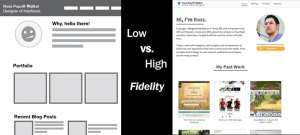I’ve taken the liberty to transcribe what he says in the video and have included the transcription below. Of course, it would be more fun to listen to him tell you his thesis than just read it.
These days it seems like we want to have fun all the time. Everyone has a plan for making work fun, learning fun, making laundry fun. It’s become so common and so cloying it’s almost enough to make you want to make you swear off fun forever. Games are perhaps the only medium daft enough to measure their aesthetic value with a nebulous concept like this — like fun — and as a result, games tend to be seen as a form of black magic: you know that they have a power over people but you can’t quite characterize that power, which makes us desperate to control it.
You know, educators are wondering: “What’re my students doing inMinecraft™ all day?” And parents wonder, “Why can my kid lead a World of Warcraft™ guild but can’t finish his homework?” And all of us wonder why [we are] so addicted to Candy Crush™. And we tend to think that games are this powerful becaues they deliver this payload of FUN. We think we want to have fun everywhere. But what does it mean to make something fun? Do we even know what it means?
If we want to design a fun toaster, or a fun tasting menu, or a fun conference talk, how would you go about it? [A slide displaying a tag cloud of words, with the word “gamification” highlighted in orange, while “game,” “experience,” and “design,” also feature prominently.] We’ve mis-understood fun to mean something like “enjoyment without effort”. And that’s why every activity now has someone trying to “gamify” it (as the consultants keep saying), to make it fun — to turn it into a delightful morsel of sugar in your mouth.
And in fact it’s with that “morsel of sugar” that many of us first learn about how games supposedly make games fun thanks to that great philosopher of fun Mary Poppins. So if you remember how that mystical Vicatorian nanny assures the Banks’ children; she says, “A spoonful of sugar helps the medicine go down.”
This song rehearses our understanding of fun as enjoyment as opposed to misery. Essentially, what Mary Poppins is suggesting is covering over drudgery, just as the robins’ songs supposedly hide the boredom of nestbuilding (or something in the Poppins’ song hides the boredom of cleanup). But, actually, “a spoonful of sugar” tells us so little. It’s kind of embarassing we kind of let this song get away with it for so long. [Quoting Poppins] “In ev’ry job that must be done/ There is an element of fun/ You find the fun, and snap!/ The job’s a game.” (It just sounds great, right?) Just try to follow this advice, I dare you. If an element of fun is hidden in every job, then how do you find it? Where do you look? By what process does a job become a game? Do I just snap? Is that it? Do I need to hire my own supernatural nanny? “A spoonful of sugar” turns out to tell us what we already know. It’s just a tautology. “A job seems more fun if it seems more fun.” Mary Poppins is selling snake oil.
Games and fun are connected not because games are intrinsically enjoyable, but games are fun because they are experiences that we encounter through play. And play is manipulating something that doesn’t dictate all of its capacities, but it does limit many of them. So Minecraft™ asks you to survive in a world made of these inhospitable cubes that you can use as resources, and Candy Crush™ asks you to solve puzzles given a limited supply of powers. And play, it turns out, isn’t limited to games at all. It’s everywhere. It’s in anything we can operate. A mechanism like a steering wheel has some play built in: room through which the steering shaft moves to turn the pinion. Play isn’t an act of diversion, but a name for making something work — for interacting with its materials. And that it why we also say that we play an instrument, or a sport. There’s an old aphorism about golf that calls it “a good walk spoiled.” And, it’s meant as a joke for us, but it underscores something fundamental: games make no sense, and yet we take them seriously preceisely because they make no sense. The philospher Bernard Suits calls it “the voluntary attempt to overcome unnecessary obstacles.” There’s something unreasonable, something foolish about playing games. And as it happens, this is where the word “fun” actually finds its origin — in “foolishness”.
The Middle English word that would become “fun” means “a fool” or “to make a fool of.” Like you might say, “don’t poke fun at me.” And the medieval fool — the jester, or the trickster — was not reckless [beg to differ, but in this sense the jester probably inhabited a state of intense and intentional “recklessness”]. It was a honest-to-god job. Being a fool was a commitment. The fool was expected to see life differently. In fact Queen Elizabeth [which one?] was even said to have rejoined [in the Middle English sense] her fools for not being critical enough of her reign. What the fool does is ask, “What else is possible?” And then carries out [enacts] even the most outlandish answer. That takes a kind of shrewdness; it’s not a witless practice. It requires this painstaking attention to detail to find something new in a familiar situation. Not this “anything goes” carelessness that we usually think of when we think of fun. In fact the fool teaches us that fun requires a greater commitment to everyday life. Not — not a lesser one at all. And “fun” isn’t a “feeling,” it turns out. It doesn’t involve making somethig easier by rewarding it with points, as if life is some blatant version of space invaders. Instead, fun means deliberately manipulating a familiar situation in a new way. We can only have fun once we’ve accepted the truth of that situation — treated it for what it is. Golf isn’t a good walk spoiled; it’s a way to transform landscapes into a centuries-long hobby. And like golf, the things that we tend to find the most fun are not easy and sweet like the Banks’ cleanup routine. I mean, manual transmissions and knitting are fun because they make driving and fashion hard, rather than easy. They expose the materials of vehicles and fabrics and they do not apologize for doing so. There’s a kind of terror in real fun — the terror of facing a world as it really is, rather than covering it up (it shouldn’t). And this is where Mary Poppins leads us astray: “a spoonful of sugar,” it hides something, it turns it into a lie. It assumes that the subject of our attention can never be sufficient on its own. When you think about it, a job is made fun by not turning it into a game, but bydeeply and deliberately pursuing it as a job.
Jobs are fun when their work is meaningful, when their activities matter the act of conducting them can be done over and over again with increased adeptness. So fun can’t be added to something no more than chocolate turns brocolli to dessert, but you can design and use things with enough resistance to allow this capacity for play. And every now and then they reward you for doing so.
In 2010, at Wimbeldon 2010, for example. John Isner and Nicolas Mahut played a match of tennis for three days. Neither one was able to break the other’s service to tip the match out of equilibrium, and both of the players served over a hundred aces. Isner finally bested Mahut with a 70–68 final set (it was so ridiculous). They found something in tennis — the two of them — that nobody had found before, as if they were unearthing a fossil. Two well-matched players could make tennis go on almost forever. They coaxed the sport to give up its secret because they treated it with such absurd respect that the game couldn’t help but release it. And this is what fun looks like at its best. You don’t need to be a tennis pro to access it.
Anyone can play anything with the deliberateness that produces fun. For example, each morning you grind your expresso beans, and you unclump and tamp them to the right weight and density which you’ve discovered over many other mornings, and then you time temperature-regulated hot water through the group-head to produce this 27-second pull that you’ve timed and it balances sour-ness and bitterness in a particular roast you’ve chosen, but then next week you choose a new grind or a new tamp to work with a new blend. On Tuesdays you go out with your friends. And even with the same company at the same bar, with the same hot wings, the same complaints about the same co-workers, each evening results in some new discovery: in the way a sense-of-humour responds to a particular story; the way a face blankets worry with a familiar gentleness. On Sunday you mow the law, and you use a manual reel mower to reduce noise, to connect yourself physically to the act of mowing. But the blades catch short on your uneven plot, and so over many Sundays you discover the momentum to keep pace between the switchbacks. While struggling to maintain that control, you refine the straightness of your stripes over the months, over the seasons.
Fun comes from the attention and care you bring to something that offers enough freedom of movement, enough play, that such attention matters. And even seemingly stupid, boring activities can be fun as a process (maybe especially stupd and boring activities can be). Feeling that you are having fun at something is a sign that you’ve given it respect. When we fail to have fun, we fail to design for it too because we don’t take things seriously enough. Not because we take them too seriously.Minecraft™ is fun because it is not trying to be anything but Minecraft™. It’s not trying to be Minecraft™ for physics education, or Minecraft™ for laundry [or lingerie?]. But imagine if physics and laundry took their practices as seriously as Minecraft™ takes Minecrafting. Imagine if all the people trying to add fun to their products and services redoubled their commitment to the experience of using them instead. And that’s how you design fun — by treating the thing you’re doing or making as exactly what it is. Fun isn’t a kind of pleasure (at least not a kind of direct pleasure).
Fun is giving respect to something that doesn’t deserve it — becoming infatuated with something for which infatuation seems impossible [the idea of excess]. Just by working it carefully and deliberately over time in the hopes that it will someday blush before you, and reveal its secrets.









You must be logged in to post a comment.